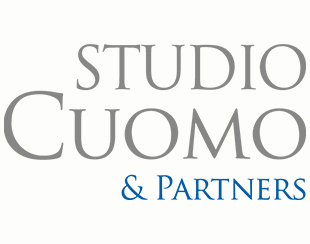
22 Feb fraudulent declaration using non-existent invoices
L’art. 2 del D.Lgs. 74/2000 punish, with imprisonment from 18 mesi a 6 years, Anyone who indicates fictitious passive elements in annual declarations in order to escape taxes on added value or income, using invoices or other documents for non-existent transactions.
Unlike the crimes provided for by the subsequent articles of the decree, There are no minimum thresholds for criminal punishment.
For crimes committed up to 17 September 2011 If the fictitious passive elements are lower than 154937,07 €, the penalty was reduced (from six months to two years) And the arrest and arrest were not allowed (art. 2 c. 3 D.Lgs. 74/2000 now repealed).
The crime is committed when the subject records invoices in the accounting records or in any case holds them for proof towards the financial administration. In any case, It is excluded that the crime can be considered committed until the moment in which these elements are indicated in the annual declaration.
It should be noted that the definition of “Invoices or other documents” includes any document with which the subject can prove the existence of deductible costs or deductible taxes.
The notion of non -existent operation appears particularly wide, including:
- The operations never carried out (so -called objective non -existence): Think of the purchase invoice of a service, that in reality I have never purchased;
- the operations carried out, but for which a different amount has been indicated on the invoice, generally higher (so -called overdue): think of a good purchased for 100, but for which I receive an invoice of 600; Note that in this case the largest tax indicated is fully due to the transferor (art. 21 as established by the United Sections 633/1972), although not deductible for the transferee as partially non -existent operation;
- the operations carried out but between different parts (so -called subjective non -existence): It is a particularly delicate aspect, because in this case the purchase was really made, but from a supplier other than that indicated in the invoice. Think of the Alfa company that acquires good from the Beta company: At this point in the operation a third person in convenience enters, often used to make the so -called Carousel fraud, The Gamma company, who receives the Beta invoice and simultaneously issues an Alfa invoice. The purchase of Alfa is thus made by the gamma supplier, while in reality the real transferor was beta. Often in the gamma fraud mechanism (the interposed subject) it's a paper mill, or a subject created specifically to issue false invoices and collect the value added tax indicated in them and then “disappear” without pouring it into the state. According to a constant orientation of the Court of Cassation, In addition to constituting a crime, The tax paid by the buyer is not deductible, since the operation results (subjectively) non -existent. In this regard, however, A very recent ruling of the Cassation clarified that “The fact that the operation is part of a fraudulent case of evasion of VAT does not involve, indeed, The loss is inevitably, for the transferee, of the right of deduction, Waiting for the need to protect the good faith of the taxable person, who cannot be sanctioned, with the refusal of the right of deduction, If "he did not know and could not have known that the operation concerned was placed in the context of an evasion committed by the supplier or that another operation belonging to the chain of sales, previous or subsequent to that of said taxable person, It was spoiled by the evasion of VAT”.
The crime is committed at the time of submitting the declaration.
If the fraudulent declaration is presented by a company, For the crime he replies who signed it.
The judge of the tax domicile of the taxpayer is competent.
As said, This type of crime is aimed at creating undue VAT credit against the State. European legislation is exploited which provides that intra -community operations of purchase (import) and sale (export) of products/services are exempt from paying VAT.
Community society X gives in to the national company Y a good of the value of 100 euro, without VAT, as per current legislation. National company y sells (fictitiously) the same good to a compatriot company, Z at a price of 122 euro, 100 euro + 22% of VAT since it is a sale in the internal market. Z, therefore, Buy the good by paying it 122 euro, declaring to the State a VAT credit of 22 euro for the purchase made. Y, at the same time, has a VAT debt of 22 euro to the tax authorities, amount that in reality has never collected and therefore will never pay the state, This is why the owners of the Y company are slimming or nullanating and Y does not establish accounting records or fulfill the obligations of tax return. Sometimes, It is actually one ghost society not even having a commercial premises or being liquidated a few months after its birth.
And è one paper mill, which produces non -existent invoices with the sole purpose of creating an undue VAT credit to the tax authorities e, obviously, Together with X and Z it is part of the same group (de facto group more than legal).
In the most structured frauds, In addition to paper mill, there is also the filter company. Then, we proceed in this way. Community society X sells good to 100 euro, without VAT, to the national company Y. Y, not having budget objectives or useful to be achieved, has no interest in gaining or generating profits. But to lower the final price of the product (We will explain the reason in the end): It then reduces the taxable VAT and resells (fictitiously) the good to z, almost at the same purchase price, 101 euro: 83 euro for the product e 18 euro for VAT al 22%, present since it is a sale in the internal market. Z, therefore, Buy the good by paying it 101 euro, declaring to the State a VAT credit of 18 euro for the purchase made. So, Z manages to offer itself on the market with an extremely competitive price product, drugged by the lowering of the taxable man made by Y thanks to the failure to pay VAT, altering the competition with other operators. Z, received the products from Y and with the credit of 18 euro to the state, He puts them back on the market by selling them to the national company W (often unaware of the fraud and foreign to fraudulent operations) which then turns to the final consumer (natural person without VAT number). Z has all the credentials to operate the commercial activity, Equipped with a stable organization and fulfilling all the duties envisaged by the tax legislation to give an even more regular appearance to the sales of the goods. Indeed, The gain has already been obtained with the passages between X, Y e Z.
Sometimes, It happened that, unconsciously, The filter company was a company outside the mechanism that turned directly to Y, attached from the low cost of the product. The jurisprudence also sanctions this subject (for unwary purchase), especially if aware of the carousel or if, with greater checks, he could have understood the motivation of such an aggressive price.
It is good to remember that in none of the cases contemplated the VAT debt to the state is welded.
It is a scheme used in particular in all those sectors characterized by large volumes of exchanges and low profit margins.


